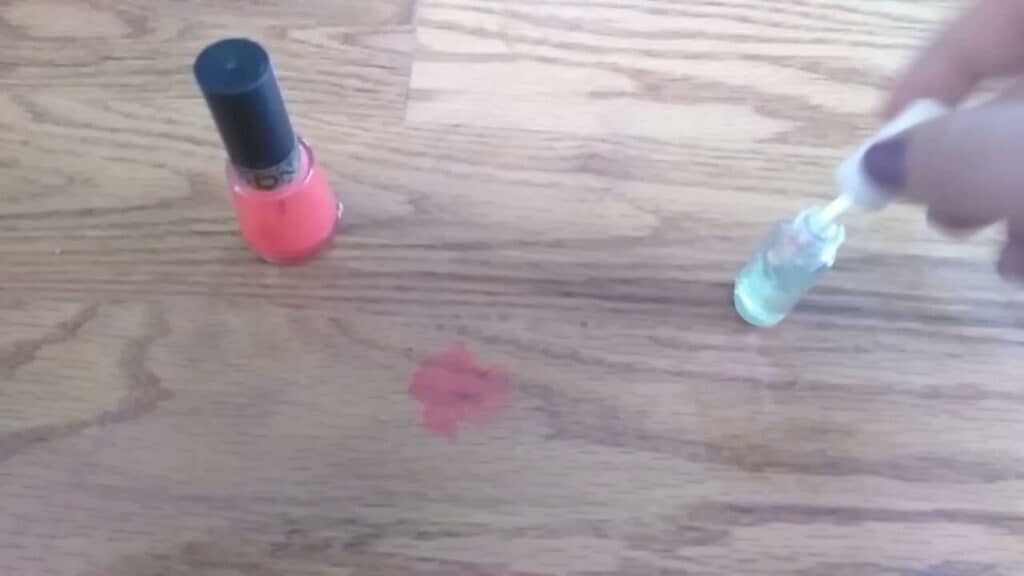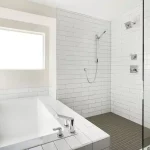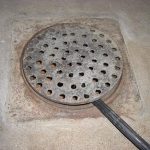Getting nail polish off hardwood floor can be a daunting task, especially if you don’t know where to start. As someone who has had to deal with this issue before, I know how frustrating it can be to see a bright red or pink stain on your beautiful hardwood floors. But fear not, there are several effective methods to remove nail polish from hardwood floors without damaging the finish.
Before we dive into the different methods, it’s important to note that the type of hardwood floor you have will determine which method is best for you. For example, if you have a waxed hardwood floor, you should avoid using acetone-based products as they can strip the wax. On the other hand, if you have a polyurethane-coated hardwood floor, acetone-based products may be more effective. It’s always a good idea to test the product in an inconspicuous area before applying it to the stain.
In this article, I’ll share with you some of the most effective methods to remove nail polish from hardwood floors. Whether you spilled a few drops or accidentally knocked over the entire bottle, these methods will help you get rid of the stain and restore your hardwood floors to their former glory. So, let’s get started!
Assessing the Damage
When it comes to removing nail polish from hardwood floors, the first step is to assess the damage. This will help you determine the best course of action to take. Here are three sub-sections to consider when assessing the damage:
Preparation
Before you start removing the nail polish, it is important to prepare the area. This includes removing any furniture or objects that may be in the way, and sweeping or vacuuming the floor to remove any loose dirt or debris. You should also have all the necessary tools and supplies on hand, such as cotton swabs, rubbing alcohol, and nail polish remover.
Identifying the Type of Hardwood Floor
It is important to identify the type of hardwood floor you have before attempting to remove the nail polish. Some hardwood floors have a protective finish that can be damaged by certain nail polish removers. If you are unsure about the type of hardwood floor you have, consult with a flooring specialist or refer to the manufacturer’s instructions.
Testing the Nail Polish Remover
Before using nail polish remover on the stain, it is important to test it in an inconspicuous area first. This will help you determine if the remover will damage the finish on your hardwood floors. Apply a small amount of nail polish remover to a cotton swab and dab it on the test area. If there is no damage, you can proceed with removing the nail polish from the stain.
Removing Nail Polish from Hardwood Floors
Using Nail Polish Remover
If you have nail polish remover at home, it can be an effective way to remove nail polish from hardwood floors. First, test a small, inconspicuous area to make sure it won’t damage your floor’s finish. Then, apply a small amount of nail polish remover to a cloth or cotton ball and gently rub the affected area until the nail polish comes off. Be sure to rinse the area with water and dry it thoroughly.
Using Rubbing Alcohol
If you don’t have nail polish remover on hand, rubbing alcohol can be a good alternative. Simply apply a small amount of rubbing alcohol to a cloth or cotton ball and gently rub the affected area until the nail polish comes off. Rinse the area with water and dry it thoroughly.
Using Vinegar
Vinegar is another household item that can be used to remove nail polish from hardwood floors. Mix equal parts vinegar and warm water in a bowl, then dip a cloth or sponge into the mixture and gently rub the affected area until the nail polish comes off. Rinse the area with water and dry it thoroughly.
Using Baking Soda
Baking soda is a gentle abrasive that can be used to remove nail polish from hardwood floors. Mix a small amount of baking soda with water to make a paste, then apply the paste to the affected area and gently rub it with a cloth or sponge until the nail polish comes off. Rinse the area with water and dry it thoroughly.
Using Acetone
Acetone is a strong chemical that should only be used as a last resort, as it can damage your floor’s finish. If you decide to use acetone, be sure to test a small, inconspicuous area first. Apply a small amount of acetone to a cloth or cotton ball and gently rub the affected area until the nail polish comes off. Rinse the area with water and dry it thoroughly.
Cleaning the Hardwood Floor
After removing the nail polish stain from the hardwood floor, it is essential to clean the area thoroughly. This ensures that there is no residue left on the floor that may cause damage or discoloration. In this section, I will discuss how to clean the hardwood floor after removing the nail polish stain.
Removing Residue
First, use a clean cloth or paper towel to wipe away any excess nail polish remover or cleaning solution. If there is still residue on the floor, use a mild soap and water solution to clean the area. Avoid using harsh chemicals or abrasive cleaners that may damage the hardwood floor’s finish.
If there is still residue left on the floor, try using a mixture of baking soda and water. Apply the paste to the affected area and let it sit for a few minutes. Then, use a soft-bristled brush to scrub the area gently. Wipe away the paste and rinse the area with water.
Polishing the Hardwood Floor
Once the area is clean and free of residue, it is essential to polish the hardwood floor to restore its shine. Use a high-quality hardwood floor polish that is compatible with the floor’s finish. Apply the polish according to the manufacturer’s instructions, using a clean cloth or mop.
Be sure to work in small sections, applying the polish evenly and allowing it to dry completely before moving onto the next section. Avoid walking on the polished area until it is completely dry.
Applying a Protective Coating
Finally, consider applying a protective coating to the hardwood floor to prevent future damage and stains. There are many types of protective coatings available, including wax, oil, and polyurethane. Choose a coating that is compatible with the floor’s finish and apply it according to the manufacturer’s instructions.
Remember, prevention is always better than cure. To avoid future nail polish stains, encourage family members and guests to remove their shoes before entering the house, and avoid walking on the hardwood floor with wet or dirty shoes.
Preventing Future Accidents
Using a Drop Cloth
One of the easiest ways to prevent future accidents is to use a drop cloth or old sheet to cover the floor when painting your nails. This will catch any spills or drips and protect your hardwood floors from damage. Simply lay the drop cloth or sheet down on the floor before painting your nails and be sure to fold it up and wash it after each use.
Keeping Nail Polish Remover Away from Hardwood Floors
Another way to prevent damage to your hardwood floors is to keep nail polish remover away from them. Nail polish remover contains acetone, which can strip the finish off your floors and cause discoloration. To avoid this, be sure to use nail polish remover in a well-ventilated area and away from your hardwood floors. If you accidentally spill nail polish remover on your floors, be sure to clean it up immediately with a damp cloth.
Using Non-Acetone Nail Polish Remover
If you must use nail polish remover on or near your hardwood floors, be sure to use a non-acetone formula. Non-acetone nail polish remover is less harsh than acetone and is less likely to damage your hardwood floors. Be sure to read the label carefully before purchasing nail polish remover to ensure that it is non-acetone.




